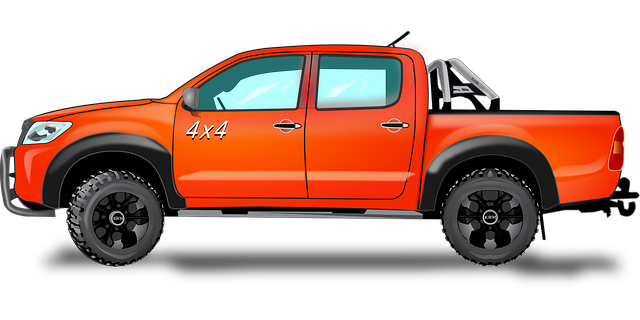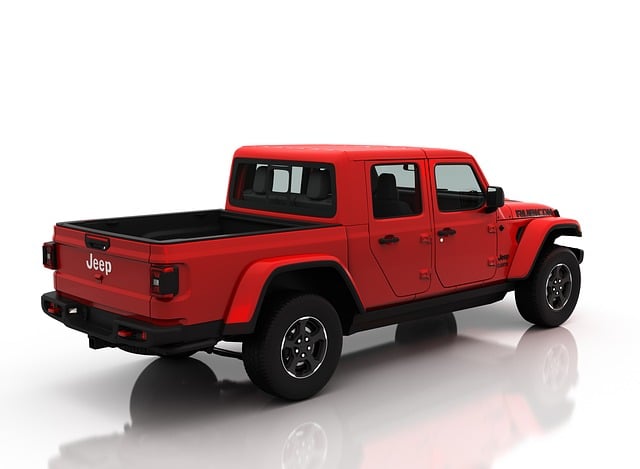Brownsville fleet Truck bed rails rely on rotors for structural support and cargo security. Advanced rotor designs enhance braking performance and thermal management, with solid rotors for uniform power and split rotors for cooling. Regular maintenance is crucial to prevent wear, rust, and premature failure. Choosing the right rotor size and material based on vehicle use and conditions ensures optimal performance and longevity.
Rotors are essential components of Brownsville Fleet truck bed rails, playing a pivotal role in their functionality and durability. This article explores the significance of rotors, delving into different rotor types—solid vs. split designs—and how they impact truck bed rail performance. We’ll guide you through choosing the right rotor size and material, highlight common issues, and provide maintenance tips to ensure optimal longevity for your Brownsville Fleet truck bed rails’ rotors.
- What are Rotors and Why are they Important for Brownsville Fleet Truck Bed Rails?
- Types of Rotors: Solid vs. Split Design Explained
- How Rotors Affect Truck Bed Rail Functionality and Durability
- Choosing the Right Rotor Size and Material for Your Brownsville Fleet Truck
- Common Issues with Rotors and How to Prevent Them
- Maintenance Tips and Longevity Strategies for Brownsville Fleet Truck Bed Rails' Rotors
What are Rotors and Why are they Important for Brownsville Fleet Truck Bed Rails?

Rotors are crucial components of Brownsville fleet Truck bed rails, playing a pivotal role in ensuring the structural integrity and functionality of these essential vehicles. These rotating mechanisms allow for smooth and controlled movement, enabling efficient loading and unloading processes. By facilitating the secure attachment and detachment of various cargoes, rotors ensure that Brownsville fleet operations run smoothly and safely.
For Brownsville fleet Truck bed rails, rotors are important as they simplify the handling of diverse cargoes, from oversized equipment to bulk goods. Their design incorporates advanced materials and engineering principles to withstand harsh environmental conditions, ensuring longevity and reliability in demanding work environments. This investment in robust rotor technology translates directly into increased efficiency and cost-effectiveness for the entire Brownsville fleet operation.
Types of Rotors: Solid vs. Split Design Explained

Rotor designs play a significant role in the performance and functionality of vehicles, particularly in the Brownsville fleet of truck bed rails. Two prominent types are solid and split rotors. Solid rotors offer consistent braking power across their entire surface area, making them ideal for heavy-duty applications like commercial trucks. Their uniform thickness ensures even heat distribution, preventing warping or overheating during intense braking conditions.
In contrast, split rotors are designed with a division that allows for better cooling. This separation creates an air gap, enabling faster dissipation of heat generated during braking. While this design may not match the consistent performance of solid rotors, it provides enhanced thermal management, which can be crucial in maintaining optimal braking efficiency under prolonged or heavy-load use.
How Rotors Affect Truck Bed Rail Functionality and Durability

Choosing the Right Rotor Size and Material for Your Brownsville Fleet Truck

When equipping your Brownsville fleet truck with rotors, selecting the right size and material is paramount. The optimal rotor size depends on several factors, including the vehicle’s make, model, and intended use. For instance, a workhorse truck like those in your Brownsville fleet may require sturdier, larger rotors to handle frequent stops and heavy loads compared to a passenger car. Material choice is equally significant; steel rotors offer cost-effectiveness and durability for regular driving conditions, while ceramic or composite rotors are better suited for high-performance vehicles or those facing harsh environmental conditions due to their superior heat resistance.
Consider your truck bed rails’ design and the type of cargo you frequently transport. If your Brownsville fleet trucks often carry heavy loads or operate in extreme temperatures, opt for rotors designed to withstand these challenges. Regular maintenance and timely replacement are key; ensure you have a reliable supply of high-quality rotors to keep your fleet running smoothly and safely on the roads.
Common Issues with Rotors and How to Prevent Them

Rotors are a critical component in many vehicles, especially Brownsville fleet Truck bed rails, as they facilitate smooth and efficient operation. However, like any mechanical part, they can develop common issues over time if not properly maintained. One prevalent problem is wear and tear due to excessive friction, which can lead to uneven tire wear and reduced fuel efficiency. Regular inspection and timely replacement of worn-out rotors are essential preventive measures.
Another frequent issue is rust buildup, particularly in regions with high moisture content. Rusted rotors can cause vibrations and noise during driving, indicating a need for immediate attention. Preventive measures include applying protective coatings and regularly cleaning and lubricating the rotor surfaces to inhibit corrosion. Additionally, maintaining proper lubrication levels and ensuring adequate cooling can avert overheating, which is another common rotor-related problem that may lead to warping or premature failure.
Maintenance Tips and Longevity Strategies for Brownsville Fleet Truck Bed Rails' Rotors

To maintain Brownsville fleet Truck bed rails’ rotors and ensure their longevity, regular cleaning and inspection are crucial. Start by wiping down the rotors with a soft cloth to remove any dirt or debris that may have accumulated during use. This simple step can prevent rust build-up and ensure optimal performance.
Next, check for signs of wear and tear, such as deep scratches or uneven thinning. If any damage is noticed, address it promptly to avoid further complications. Regularly replacing worn-out parts not only enhances safety but also prolongs the life of your truck bed rails’ rotors. Additionally, keeping an eye on the brake fluid level and ensuring it’s within the recommended range will contribute to maintaining the overall efficiency of your braking system.
Rotors play a pivotal role in ensuring the optimal performance and longevity of Brownsville Fleet Truck Bed Rails. By understanding different rotor designs, materials, and their impact on bed rail functionality, you can make informed choices to enhance your fleet’s durability and efficiency. Regular maintenance and an awareness of common issues will further contribute to the overall health of these essential components, allowing your Brownsville Fleet Truck Bed Rails to withstand the rigors of daily use.



